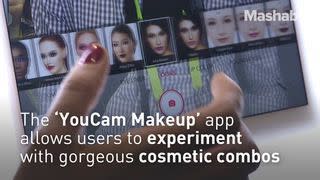Android's first serious augmented reality phone is finally here

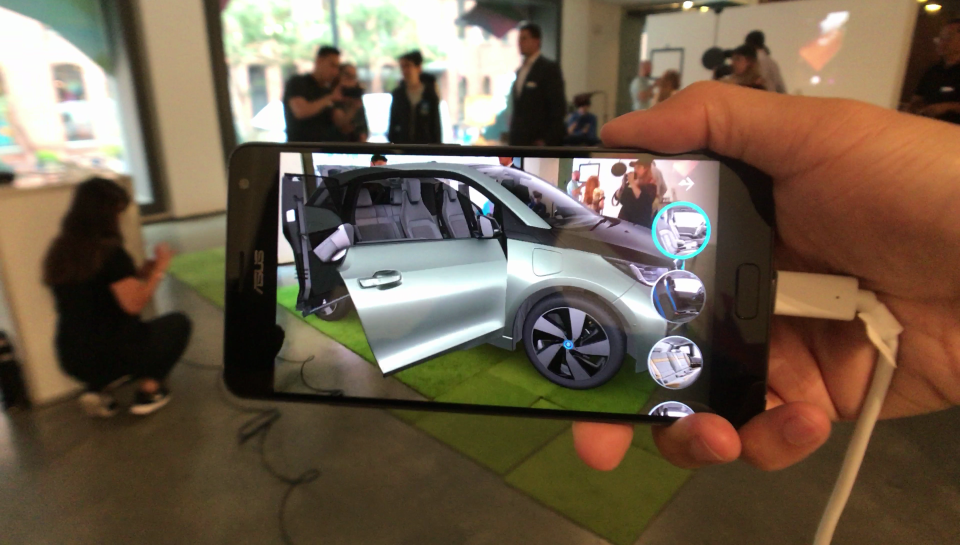
Asus's Zenfone AR, the second Android phone to include Google's Tango-based 3D depth-tracking for advanced augmented reality experiences, is finally available for purchase in the U.S.
Cutting-edge consumers can pick one up at Verizon for $29 a month paid over 24 months, or for the full price of $648.
SEE ALSO: How fashion brands are saving Android Wear smartwatches
If you're on AT&T or T-Mobile, Asus will sell you the unlocked version for $599 (64GB of storage and 6GB of RAM) or $699 (128GB of storage and 8GB of RAM). And if you're on Sprint, well, no Zenfone AR for you. Womp womp.
While it's not the first consumer Tango phone (Lenovo launched the Phab Pro 2 last year), the Zenfone AR is notable because it's not huge. Unlike the Phab Pro 2 which had a gargantuan 6.4-inch screen, Asus's phone isn't made for giants and has a 5.7-inch Quad HD (2,560 x 1,440) screen.
Asus has spent the last seven months showing off the phone at CES, Mobile World Congress, and at Google I/O. While it's not fully metal (the backside has a grippy-like texture), it's Asus's nicest phone yet, at least compared to its flagship Zenfone devices.
The specs, while not the latest and greatest, are still good. It's powered by a Qualcomm Snapdragon 821 chip, 6GB of RAM with 64GB of storage or 8GB of RAM with 128GB of storage, and has a 3,300 mAh battery. There's also memory card slot, a headphone jack, and a USB-C port.
But the specs don't really matter as much as the AR experiences do, because let's be real, if you're buying this phone, that's what you're interested in.
Growing AR app experiences
In my limited time trying it out over the year, I've seen the AR apps blossom from kinda lousy, barely-working tech demos to ones that more closely resemble finished experiences. There's still a ways to go in terms of polish, but the ones I saw at an Asus preview event on Wednesday look very promising.
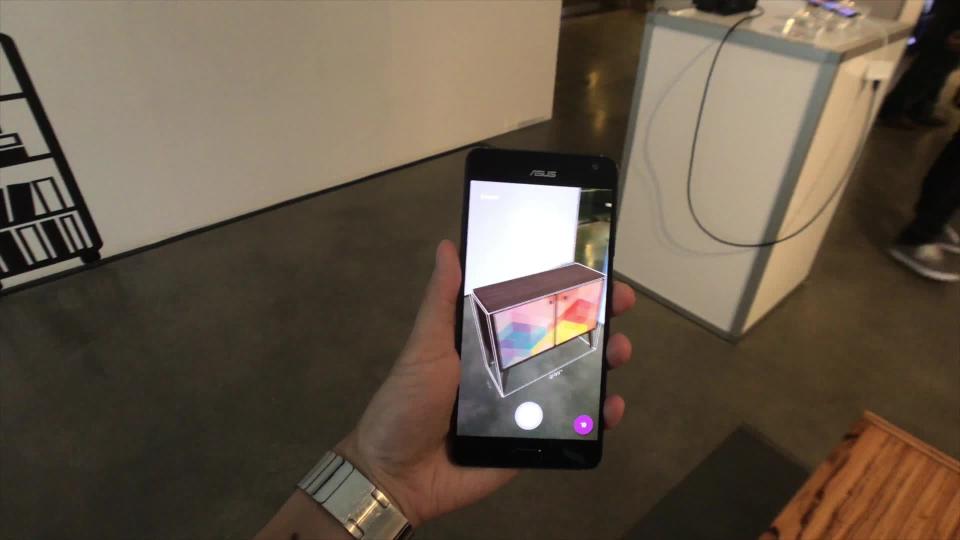
Wayfair's furniture AR app lets you browse through thousands of furniture and then place them in your home so you get a real life preview of how they'd fit, complete with dimension measurements. It's a clever app that really gives you a sense of each furniture's textures as you move the phone around it and even inside of certain ones like cabinets.
The app's also smart enough to understand what's a wall and floor. So for example, it won't let you place a wall-mounted light on the floor or a sofa on the wall. I've seen a lot of augmented reality furniture apps over the years and most of them have sucked. Wayfair's is pretty sweet.
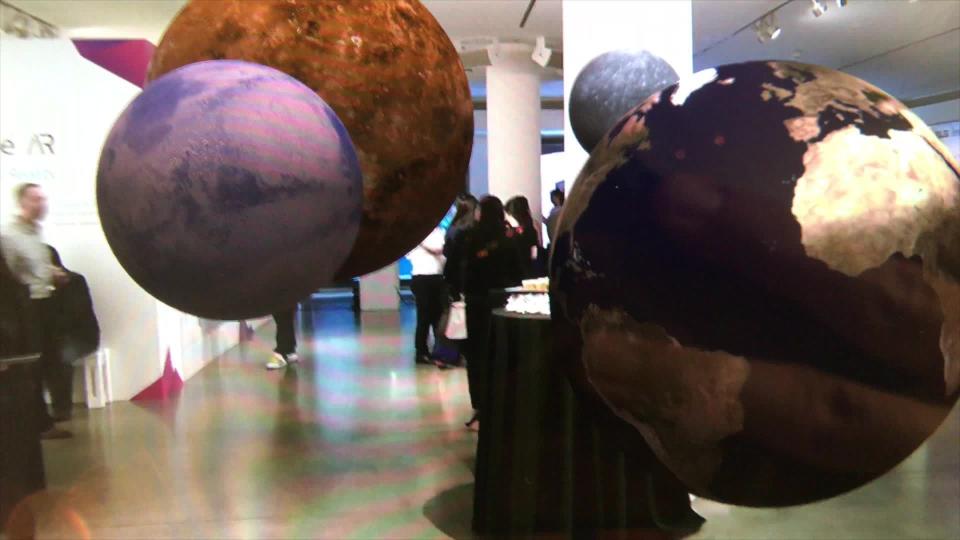
Asus also trotted out Google Expeditions, which was announced at Google I/O. Designed for classrooms, Zenfone ARs are mounted on selfie sticks and students can use them to walk around virtual models of things like volcanoes, planets, and tornadoes.
`I've never loved selfie sticks more than with Expeditions. Back in my day, if we wanted to learn about the solar system or see a map of the world, we used 2D maps, foam models, globes or watched videos. But students can now literally see what it's like inside of a spinning tornado or the layers inside of the sun. It's amazing, but most important AR makes learning really fun.
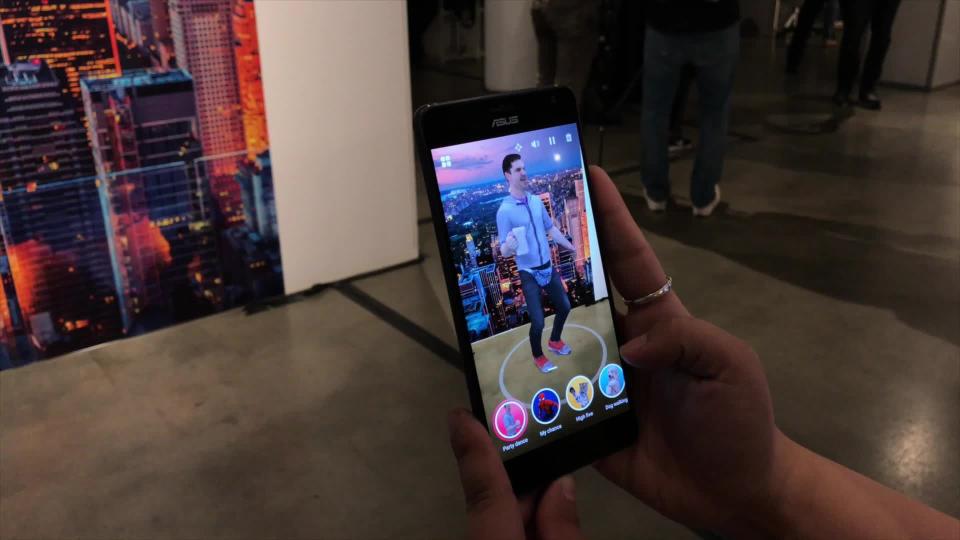
Two of the less cool-looking AR apps I saw were Holo and Slingshot Island. Holo puts various "digital holograms" of things like animals, objects and even superheroes in 3D space and then you can take photos with them. Like all AR experiences, you move closer to the AR objects to examine them up close. It's neat, but gets old pretty quick in my opinion.
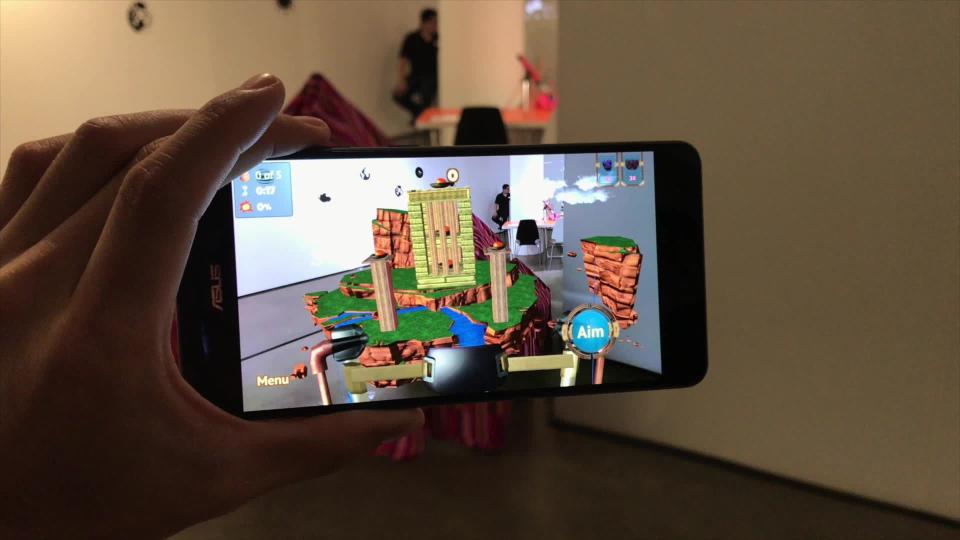
Slingshot Island is a simple game that's kinda like Angry Birds, but without the birds. The goal of the game is to aim a slingshot by locking onto a bunch of blocks and then pulling your arms back to replicate the flinging action. The demo was a little janky, but still pretty neat.
Of the handful of AR demos I got to try out, BMW's i Visualizer app was the most impressive. It lets you place a digital version of a life-sized BMW i3 or i8 car in a space, and then you can literally enter the car and look around the interior as if you're actually in the driver's seat and behind the wheel.
The app's got different interior options you can toggle through to see what you'd prefer. It feels like the ultimate way to look at the different package options without needing to go to a dealership. The textures are really high resolution.
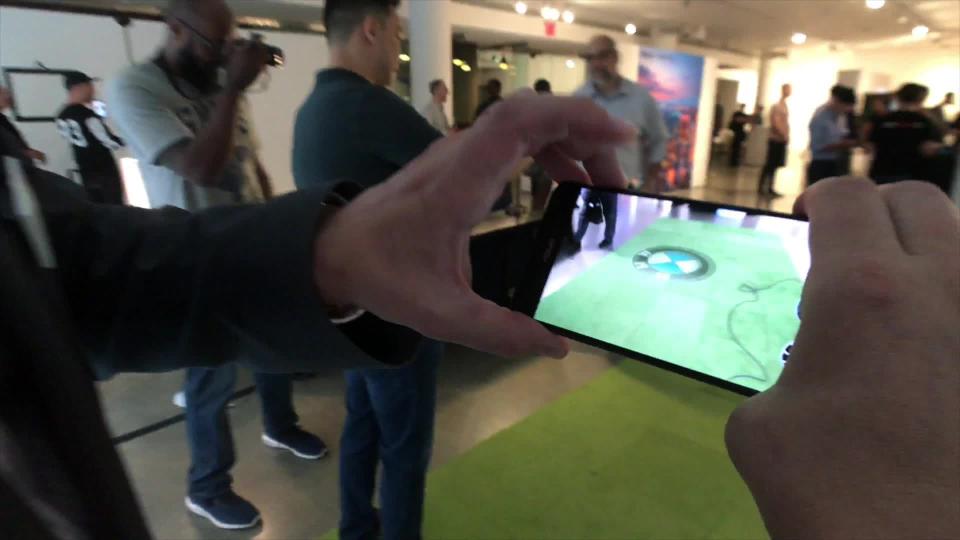
As my brain was processing this mind-blowing car experience, I couldn't help but think that an AR app like the BMW i Visualizer would be perfect to sell Tesla's Model 3. I questioned how any sane person buying a car could do so without ever seeing the interior or test-driving it in person. An app like this one is the perfect way to bridge that gap. If Tesla offered an AR app like this one that'd let me look at it in my own driveway, it'd probably convince more buyers to pony up for a pre-order.
But what truly blew me away in the app was the attention to detail, like the ability to tap on a button on the steering wheel lever and turn the AR windshield wipers on and off. Or how the see-through heads-up display on the windshield really feels true to life. It's just incredible.
Scratching the surface
AR's set to explode this year like never before. Tango was slow out the gate and Apple's gonna charge full-throttle forwards on AR in a few months with ARKit on millions of iOS devices.
Android obviously needs more phone makers to include Tango hardware in their phones, which could take a year or two to happen. Things certainly look a lot more promising for AR than VR, which has found a niche user base, but has yet to really click for mainstream consumers. But beware, as great as AR is, it could also potentially be dangerous.
WATCH: Now you can experiment with makeup in augmented reality
